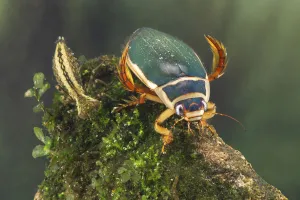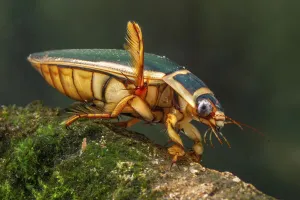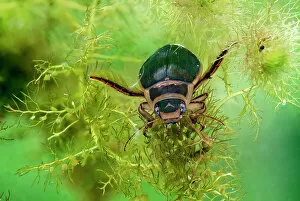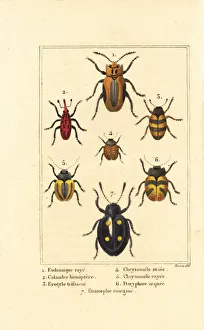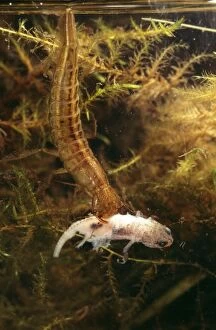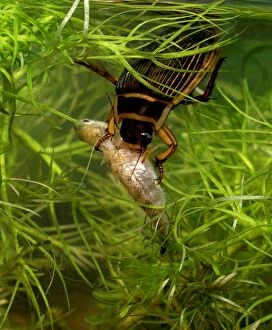Dytiscus Collection
"Dytiscus: A Fascinating World of Aquatic Beetles and Dragonfly Nymphs" In the enchanting waters of Europe, specifically in August
All Professionally Made to Order for Quick Shipping
"Dytiscus: A Fascinating World of Aquatic Beetles and Dragonfly Nymphs" In the enchanting waters of Europe, specifically in August, one can witness the captivating presence of the Great diving beetle (Dytiscus marginalis) and the formidable Dragonfly nymph (Aeshnidae). These aquatic creatures thrive in their natural habitat, showcasing their remarkable adaptations for survival. Under controlled conditions, a male Great diving beetle (Dytiscus marginalis) reveals its majestic beauty. This specimen allows us to appreciate its intricate features up close, highlighting the wonders of nature that often go unnoticed. Venturing further north to Scotland's Darnaway Estate in May, we encounter the Male Highland Great diving beetle (Dytiscus lapponicus), gracefully gliding on the surface of water. This breathtaking sight is captured through focus stacking techniques, providing a detailed glimpse into this captivating creature's world. Although captive at this moment, it reminds us of nature's diversity and resilience even in remote regions. The Metamorphoses marginalis engraving takes us on an artistic journey depicting these beetles' life cycle—a testament to their incredible transformation from larvae to fully grown adults. It serves as a reminder that change is inevitable and beautiful within every living being. Exploring beyond just beetles, we delve into Curtis British Entomology Plate 99—showcasing not only Weevils but also various other fascinating beetles. The intricacies displayed by these insects are truly awe-inspiring; they remind us that there is always more than meets the eye when observing nature's smallest inhabitants. Plant, Fruit & Insects come together harmoniously as part of our ecosystem—an interdependent web where each organism plays a vital role. Amongst them stands Dytiscus marginalis or great diving beetle (male), symbolizing strength and adaptability amidst changing environments.

